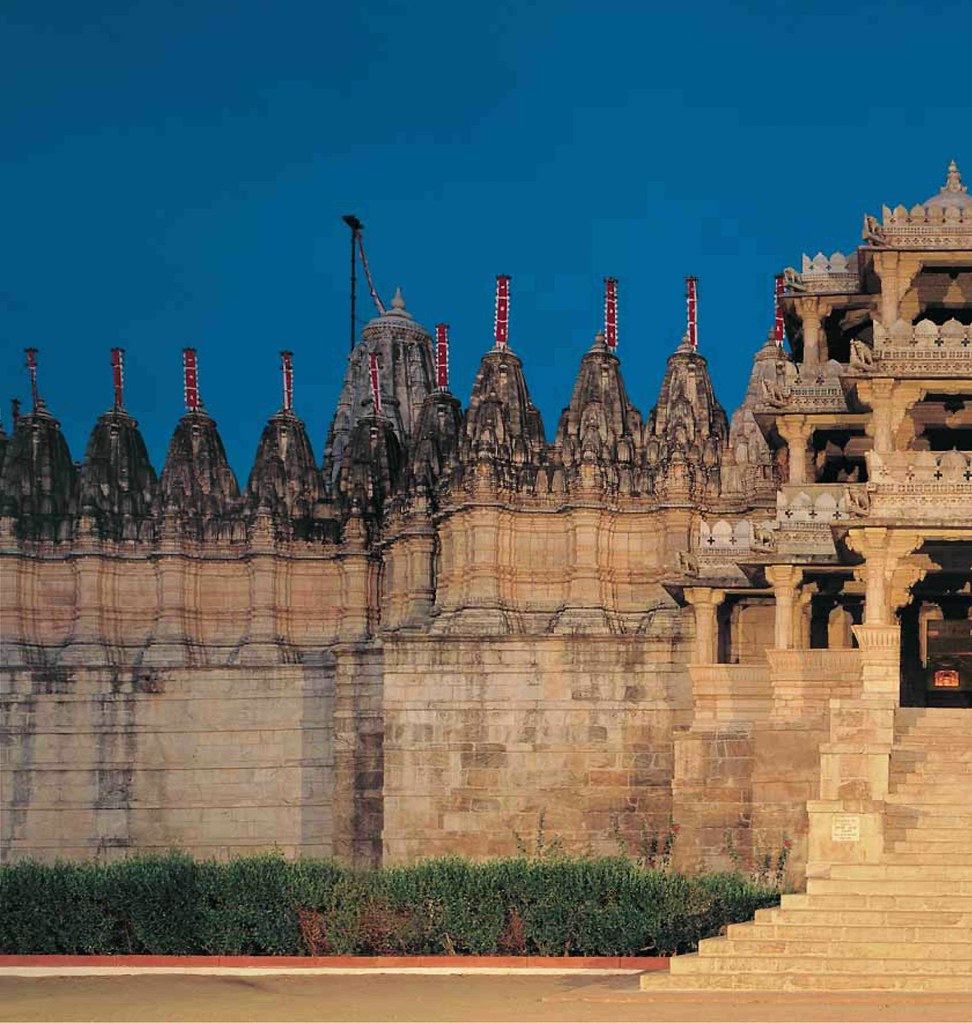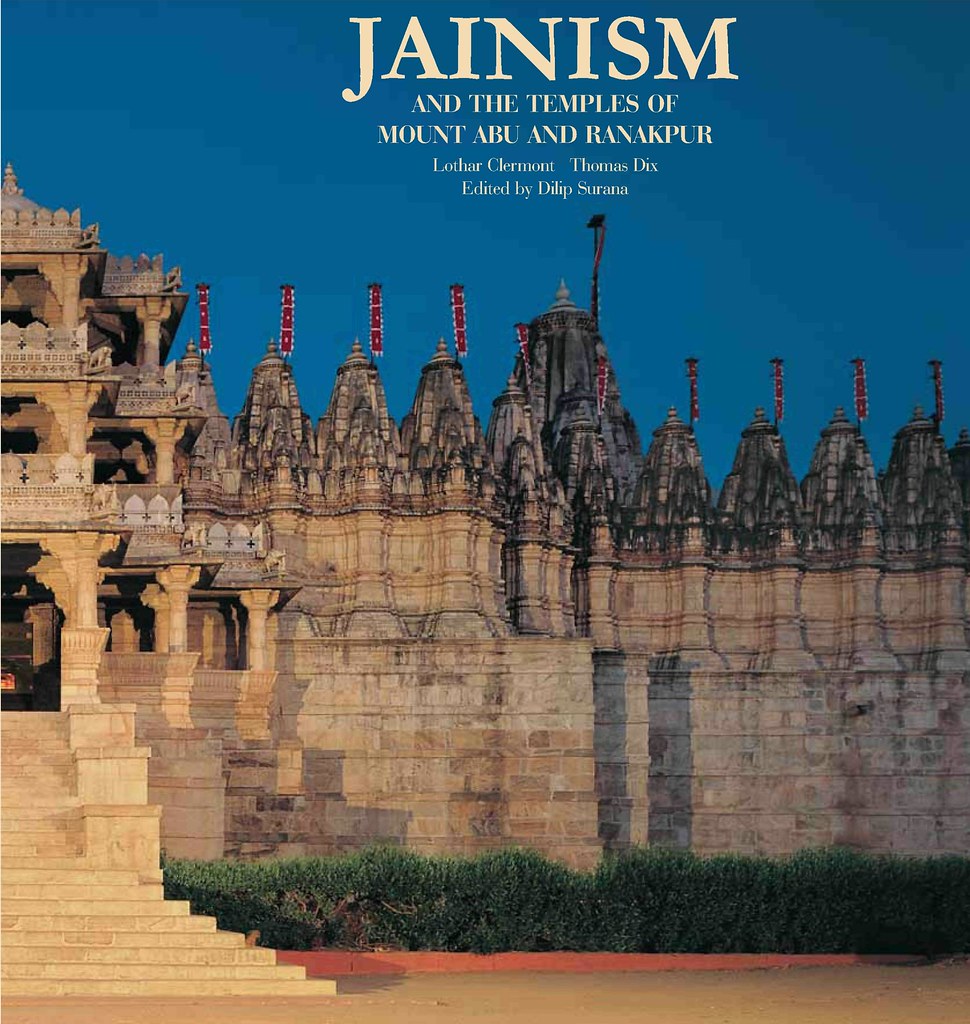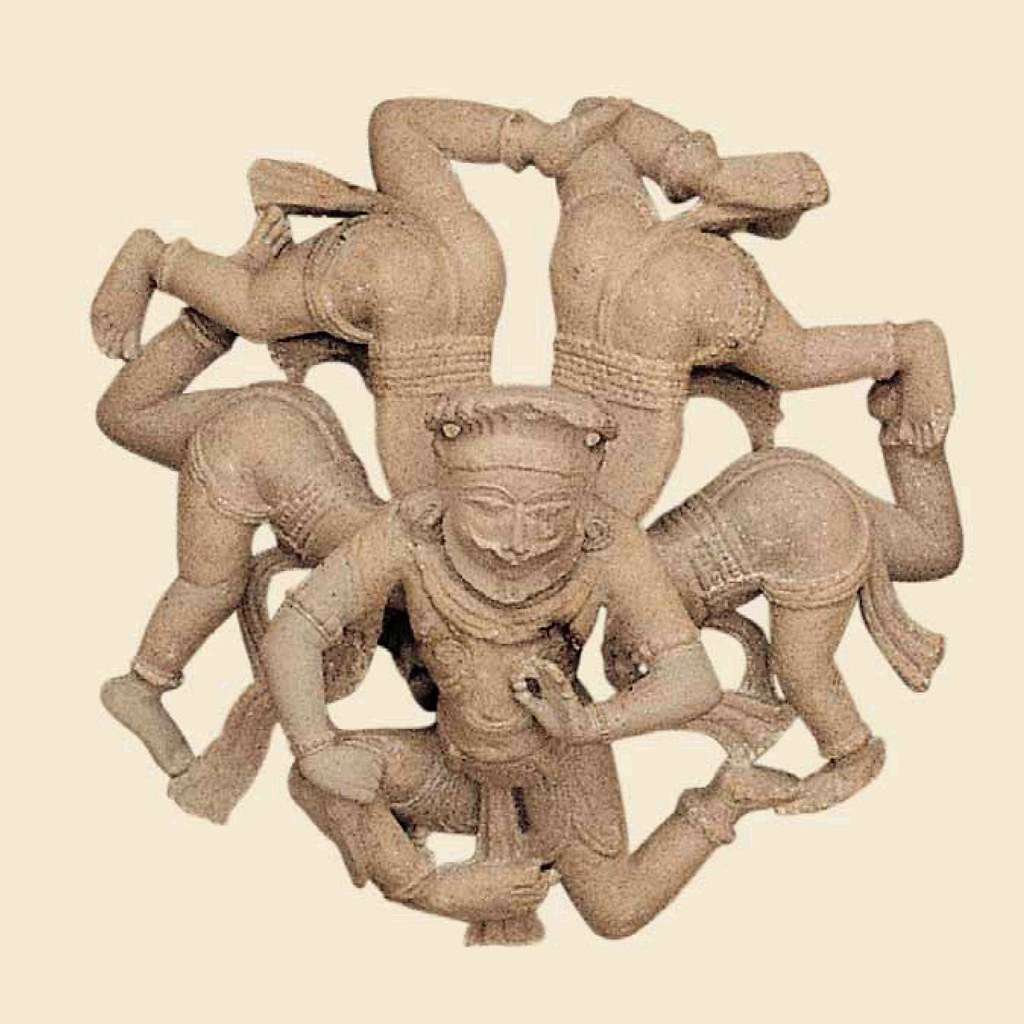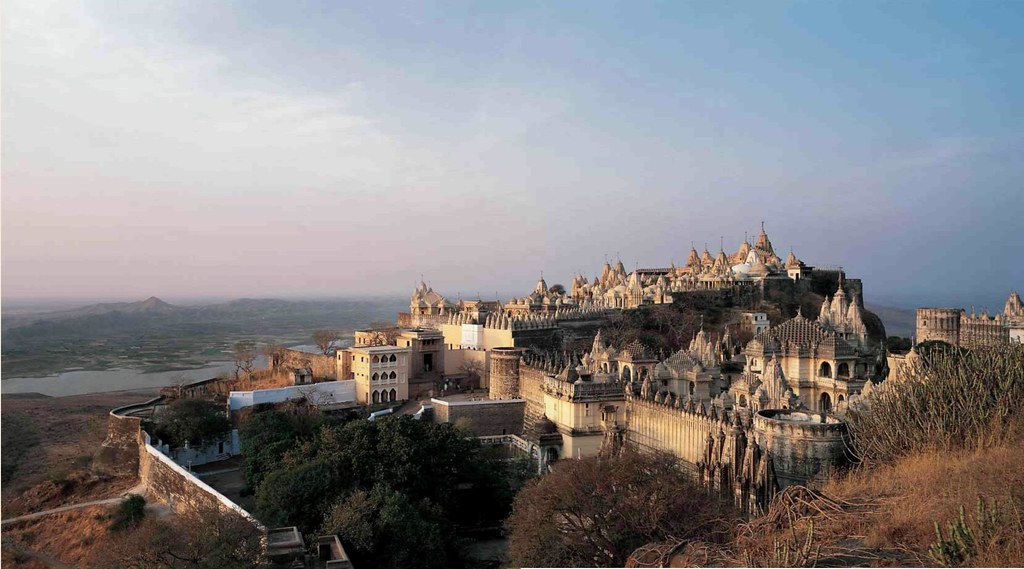 left side Western facade of Dharma Vihara temple, Ranakpur, 1439 AD, dedicated to Adinatha, with an imposing flight of steps leading to the main entry and little towers on the numerous by-shrines with Jain typical red-white flag and tinker bells.
left side Western facade of Dharma Vihara temple, Ranakpur, 1439 AD, dedicated to Adinatha, with an imposing flight of steps leading to the main entry and little towers on the numerous by-shrines with Jain typical red-white flag and tinker bells. right side english version
right side english version Dharma Vihara Temple, Ranakpur
Western facade of Dharma Vihara temple, Ranakpur, 1439 AD, dedicated to Adinatha, with an imposing flight of steps leading to the main entry and little towers on the numerous by-shrines with Jain typical red-white flag and tinker bells.
Jainism
While studying Jainism two aspects are particularly fascinating. The first is its antiquity. Jainism numbers among the oldest religious layers of India, dating back to at least the first millennium BC; perhaps even earlier. With time, Hinduism and Buddhism, its chief rival religions, underwent great changes and, in part, the changes were so drastic as to render these religions unrecognizable. Jainism in contrast, has remained largely unchanged in its basic doctrine since the 6th century BC. Consequently, Jainism is today one of the oldest religions of humankind in existence. In Jainism, one perceives a glimpse of the oldest religious sensibility of an Indian, which is unmediated and direct.
The second aspect is that although Jainism and Buddhism emerged in the same area and at about the same time, Jainism has always remained the religion of a relatively small minority. Its elitism is rooted in the demands made on the individual: its philosophy, with its difficult, abstract ideas and with its categorical emphasis on its own traditions, made the likelihood of change almost impossible. This made mass participation difficult, denying Jainism the status of a world religion. In contrast to its relatively meagre following exist the numerous and grandiose Jain temples and places of worship. These exist in several parts of India and are evidence of the considerable affluence of the Jains as well as of almost fanatic donor activities.
 Entrance Hall (West) at the ceiling, symbolising the 5 elements: Fire - Water - Heaven (Ether) - Earth & Air
Entrance Hall (West) at the ceiling, symbolising the 5 elements: Fire - Water - Heaven (Ether) - Earth & Air Kichak
Ranakpur, Entrance Hall (West) at the ceiling,
symbolising the 5 elements:
Fire - Water - Earth - Air - Heaven (Ether)
Mahavira
Mahavira (the great hero) is regarded as the founder of Jainism. He said to have been born in the 6th century BC in Kundargrama, forty km north of Patna, to Siddharta and his wife Trishla. Stories about his life have evolved in a manner similar to that of Buddha, representing the typical biography of a ‘Saviour of the World’: This includes the dreams of the mother in which the destiny of the son is preordained. It also includes his birth as the son of a king and his consort. His renunciation of the world later, therefore, appears all the more remarkable in the light of this. The parents named the child Vardhamana (to grow, flourish) since the country became increasingly prosperous during the period of his mother’s pregnancy.
According to legends, Vardhamana was from the very beginning, highly sensitive to suffering in the world. It said that even while in his mother’s womb, he did not move, as it would have caused Trishla pain. Although he grew up in an environment and style befitting the status of his parents, yet like them he practiced the ideal of ahimsa (non-violence), which a wandering ascetic, Parsvanath, had preached two hundred and fifty years earlier. Mahavira constantly immersed in profound thought, contemplating the significance and meaning of life. Consequently, it was not long before he became dissatisfied with his life despite the external trappings of glory and pompon on one hand and domestic bliss on the other (he was married and was father of a daughter). After the death of his parents, he repeatedly urged his elder brother to permit him to wander around the world as an ascetic until his brother finally succumbed to his urgings. For thirteen months, he wandered as a monk and devoted himself to meditation. Thereafter, he divested himself of the monk’s robes and continued his wandering sky clad’, practicing rigorous penance and meditation, all the while abused and mocked at by the society. After twelve years, in the village of Jrimhhikagrama, he attained full enlightenment and so became Jina (the conqueror) and Tirthankara (ford maker). For several decades after this, he continued as a wandering teacher and preached to the gods, humans and animals. At the age of seventy-two years, he attained moksha (i.e., redemption) in Pava. According to the Jain tradition, Mahavira died in 527 BC whereas Western research puts his date of death at 477 or 468 BC.
 View from Holy Mount Shatrunjaya ("Location of victory", height: 591m) on India's largest temple site founded by Jains, near Palitana, Gujarat, situated 215 km southwesterly from Ahmedabad.
View from Holy Mount Shatrunjaya ("Location of victory", height: 591m) on India's largest temple site founded by Jains, near Palitana, Gujarat, situated 215 km southwesterly from Ahmedabad. Tempels of Palitana
View from Holy Mount Shatrunjaya ("Location of victory", height: 591m) on India's largest temple site founded by Jains, near Palitana, Gujarat, situated 215 km southwesterly from Ahmedabad.
